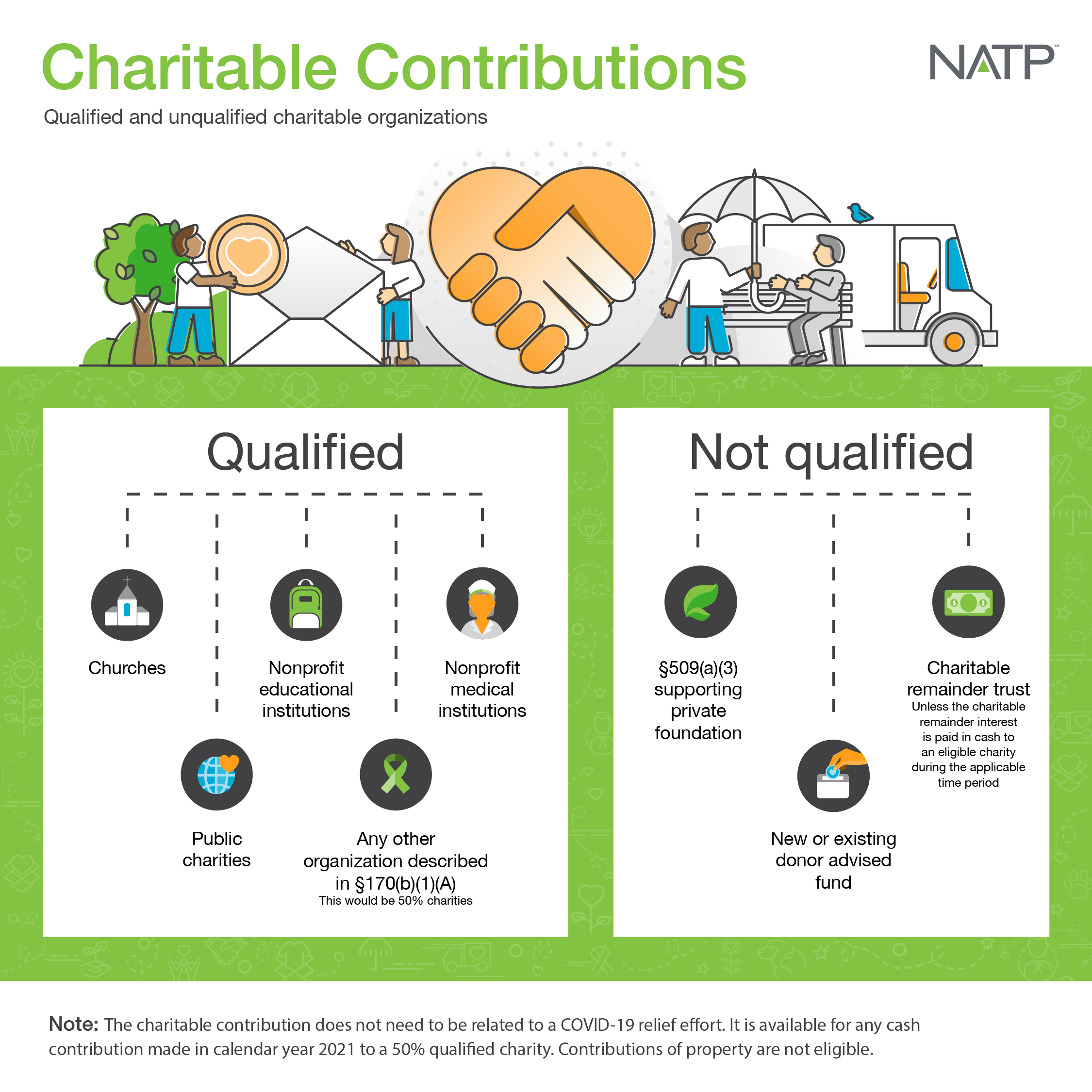How to deduct charitable contributions for 2021 returns
Charitable contributions are a great way to support organizations you care about and your local community! On top of that, depending on your client’s tax situation, donations to a qualified charitable organization could be a way for them to reduce their tax liability at the end of the year.
The Taxpayer Certainty and Disaster Relief Act of 2020 (TCDRTA) provided more tax incentives for individuals and corporations making charitable contributions on 2021 returns. It extended the suspension of the adjusted gross income (AGI) percentage limitations on the deduction of cash contributions by individuals for qualified charitable contributions. It also allows a deduction of up to $300 ($600 for married filing jointly filers) for non-itemizers for tax year 2021.
For 2021, the charitable deduction is claimed as a deduction in calculating taxable income (as opposed to an above-the-line deduction in calculating AGI for 2020).
Individual contributions
Generally speaking, only individual taxpayers who itemize their deductions qualify for a charitable contribution deduction. The itemized deduction for charitable contributions is limited to a percentage of the taxpayer’s AGI, computed without regard to the charitable deduction and any net operating loss (NOL) carrybacks.
The type of organization receiving the donation and property donated determines the percentage. For tax years beginning after Dec. 31, 2017, and before Jan. 1, 2026, the contribution base for cash contributions by individuals to 50-percent public charities increased from 50% to 60% of AGI.
The TCDTRA suspended the 60% limitation on the deduction of charitable cash contributions for 2021. The cash contribution must be made after Dec. 31, 2020, and before Jan. 1, 2022, to a qualified charity to qualify for the 100% deduction.
An individual may claim an itemized deduction for contributions to a charitable organization on Schedule A (Form 1040).
Qualified charitable organizations
The following organizations are considered qualified charitable organizations:
- Churches
- Nonprofit educational institutions
- Nonprofit medical institutions
- Public charities
- Any other organization described in §170(b)(1)(A)
- This would be 50% charities
The following organizations are not considered qualified charitable organizations:
- §509(a)(3) supporting private foundations
- New or existing donor advised funds
- Charitable remainder trusts, unless the charitable remainder interest is paid in cash to an eligible charity during the applicable time period
The definition of qualified charity is also the same one used by a corporation when looking at qualifying corporate donations.






